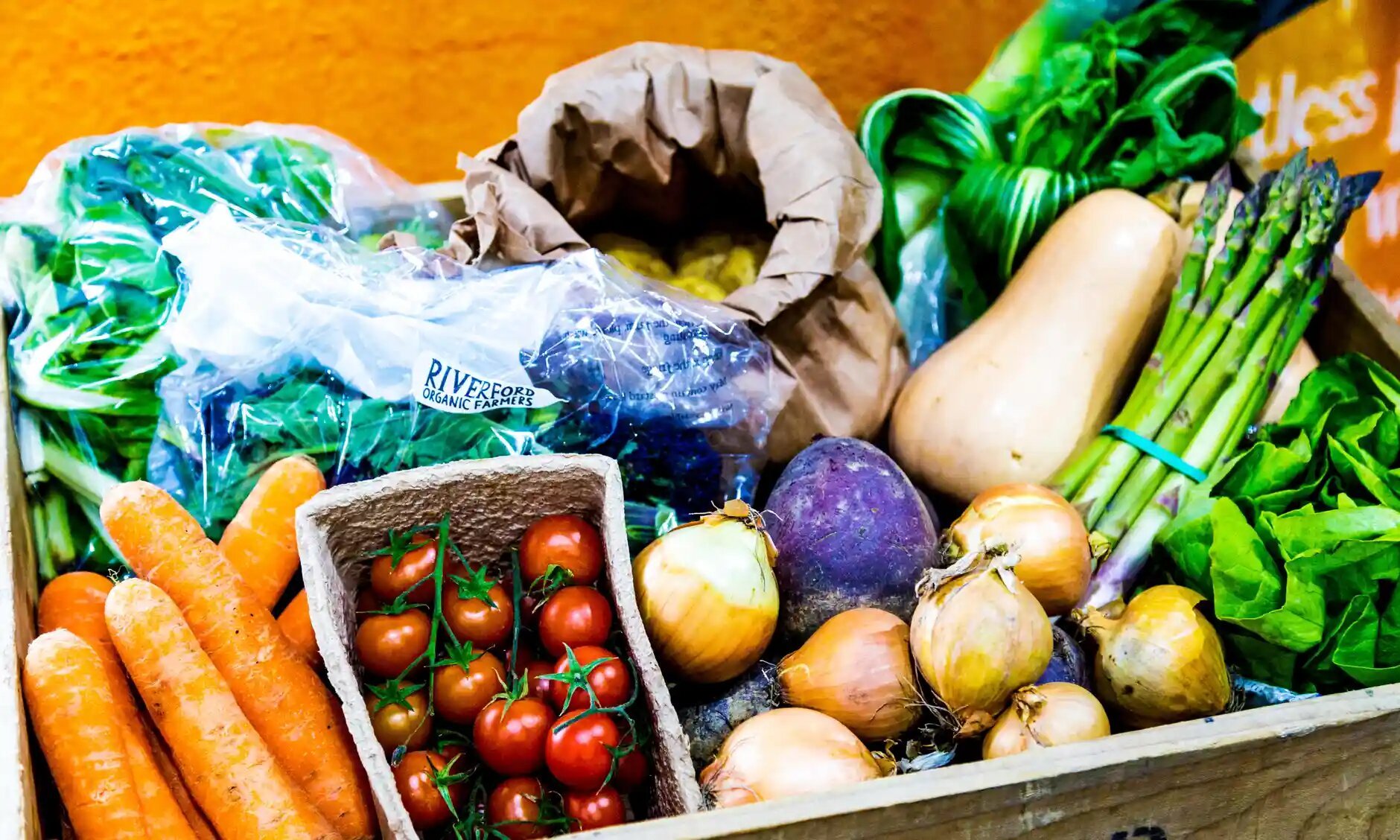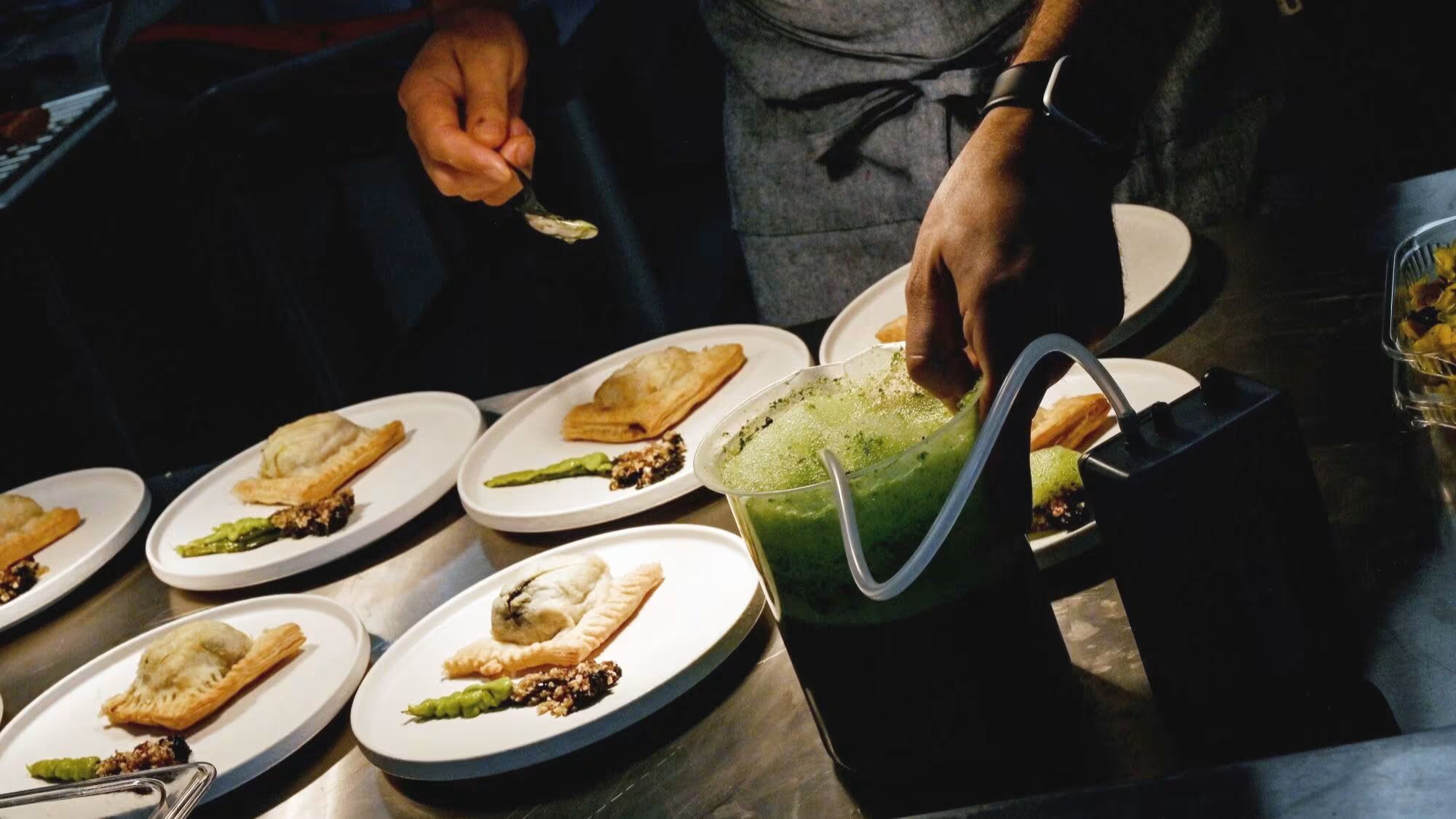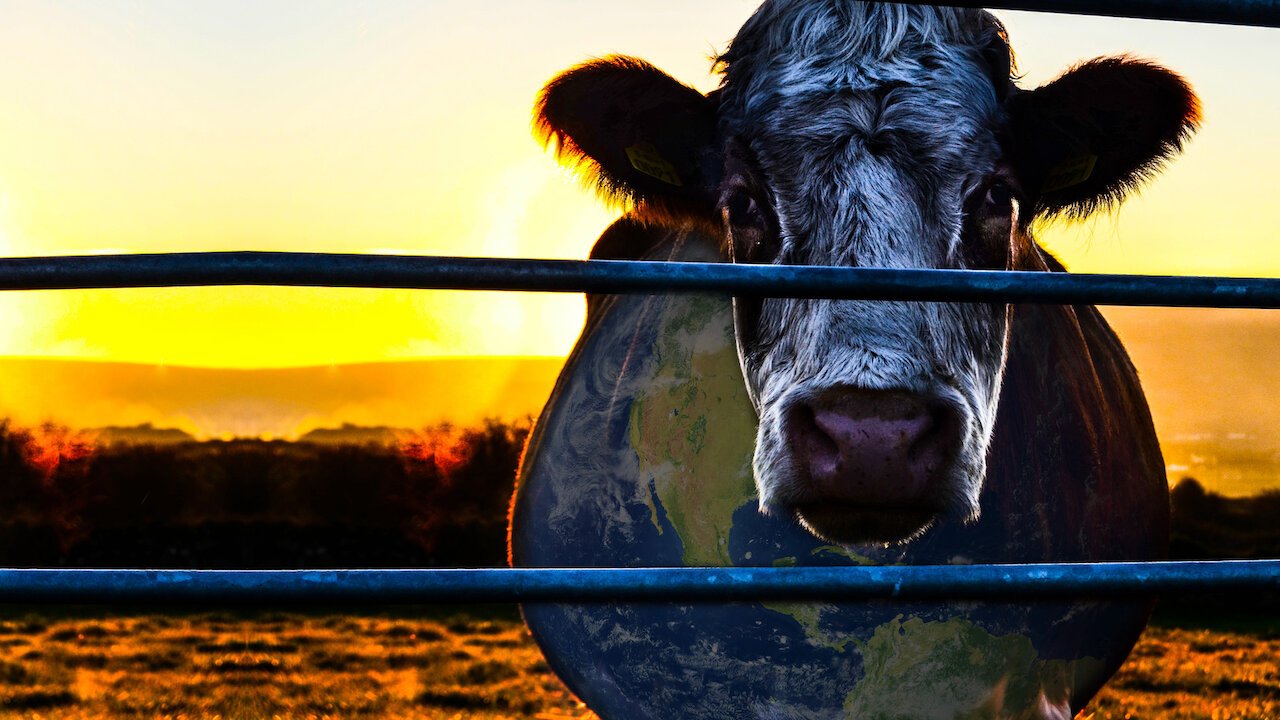A short recap of how your food choices impact the planet and farmed animals.
Vegan diet massively cuts environmental damage, study shows
Eating a vegan diet massively reduces the damage to the environment caused by food production, the most comprehensive analysis to date has concluded.
The research showed that vegan diets resulted in 75% less climate-heating emissions, water pollution and land use than diets in which more than 100g of meat a day was eaten. Vegan diets also cut the destruction of wildlife by 66% and water use by 54%, the study found.
Wanted: investors to restore soils and push plant-based diets
Investors wanting to have maximum climate impact should spend their money on encouraging a global shift to plant-based diets, says a study from newly created non-profit Tilt Collective and consultancy Systemiq.
Investing in the creation of a plant-rich food system offers more than five times the emissions reductions from the same investment in renewable energy, and four-times that of electric vehicles, finds the report published on Monday at New York Climate Week.
It also suggests that encouraging people to eat plant-rich diets and to turn away from meat-heavy meals saves more emissions than trying to make livestock farming more sustainable.
Save the Planet, Put Down that Hamburger
According to new research from the University of Oxford, people who follow a plant-based diet contribute 75 percent less to greenhouse gas emissions compared to those who consume more than 3.5 ounces of meat daily. The study also found that a vegan diet causes significantly less damage to land, water, and biodiversity.
While previous studies established the link between animal agriculture and environmental harm through scientific modeling, this Oxford research stands out by analyzing the actual diets of 55,500 people — including vegans, vegetarians, fish-eaters, and meat-eaters — in the United Kingdom. It also used data from around 38,000 farms across 119 countries.
Study: Plant-rich food systems could yield five-times the climate impact than green energy projects
Shifting to a plant-rich food system represents 'spectacular pay-off' as climate benefits per dollar far outstrip those on offer from renewables and EV projects, a new study claims
Embracing a plant-based diet
Your diet is one of the first places to start if you’re looking to manage your health and weight. Focusing on whole foods from plant sources can reduce body weight, blood pressure and risk of heart disease, cancer and diabetes — and it can make your environmental impact more sustainable.
But how do we embrace plants in our diets if we’re so accustomed to including meat and dairy as primary nutrition sources?
We spoke with Dr. Reshma Shah, a physician, plant-based eating advocate, co-author of “Nourish: The Definitive Plant-Based Nutrition Guide for Families” and Stanford Healthy Living instructor, about simple ways to incorporate more plants into your diet and the benefits this can provide for both you and the planet.
Plant-Based Dietary Patterns for Human and Planetary Health
Plant-based foods have a significantly smaller footprint on the environment than animal-based foods. Even the least sustainable vegetables and cereals cause less environmental harm than the lowest impact meat and dairy products. On top of the low environmental impact of plant-based diets (PBDs), they may provide additional benefits to human health. Unhealthy diets now represent the largest burden of disease globally, presenting a greater risk to morbidity, disability, and mortality than unsafe sex, alcohol, drug, and tobacco use combined. Adopting plant-based food systems may allow countries to reduce their environmental footprints and tackle their obesity and diet-related non-communicable disease burdens simultaneously
The Case for Plant Based
Eating a plant-based diet is not just good for our health; it is good for Earth’s health. In fact, “Shifting away from animal-based foods [could not only] add up to 49% to the global food supply without expanding croplands;” but would also significantly reduce carbon emissions and waste byproducts that end up in our oceans and as seafood byproducts (Jalava et al, 2014).
If each and every person in the United States gave up meat and dairy products on one or more days of the week; ideally, all days of the week, we would save the environment from thousands of tons of carbon emissions. In fact, in one year, animal husbandry creates as much carbon emissions as the entire transportation sector.
Are burgers made from plants really better for you than real beef burgers?
Scientists have found that in most cases, plant-based meat substitutes — or “alt-meat” — can improve some measures of your metabolic health, most notably LDL cholesterol, the kind that’s associated with heart disease.
Companies like Beyond Meat of El Segundo, Calif., and Impossible Foods of Redwood City, Calif., often tout the health benefits of their foods. But whether you see any health improvements will depend on the brand of alt-meat that you choose and what exactly it’s replacing in your diet.
Vegan Diet Uses 5 Times Less Water Than a Meat-Based Diet, Study Finds
A meat-based diet is known to be damaging to the environment, and its excessive water footprint is now also a major concern. By contrast, a vegan diet uses five times less water than a meat-based diet, a study by the European Commission Joint Research Centre (JRC) has found.
The JRC is the European Commission’s science and knowledge service conducting research in order to provide independent scientific advice to EU policy.
Vegan Diets Cut Emissions, Water Pollution and Land Use by 75%, Major Study Finds
An analysis of diets and farms led by the Livestock, Environment and People (LEAP) project at Oxford University found that vegan diets have a major reduction in environmental impacts, from land and water use to emissions to pollution.
The study, published in the journal Nature Food, analyzed diets of 55,504 people and reviewed 38,000 farms based in 119 countries. What they found is that regardless of where or how food is produced, animal-based diets had higher impacts on the environment than diets of people who consumed less or no animal-based products.
How Vegan and Plant-Based Eating Can Help The Environment
A plant-based, vegan diet consists of food that comes from plants and has no ingredients from animals, such as meat, dairy, or eggs. Plant-based foods and ingredients include fruits, vegetables, root vegetables (such as potatoes), whole grains, starches, beans, legumes, and nuts. Tofu and other meat alternatives, as well as dairy-free milks and cheeses, are also popular plant-based foods.
A Few of our favorites in showcasing the truth about the environmental impact and cruel realities prevalent in factory farms
2015: ’Cowspiracy’ showcases shocking truths about animal agriculture’s environmental impact
In 2014, "Cowspiracy: The Sustainability Secret" was named our movie of the year for its portrayal of animal agriculture's adverse environmental effects. The film reached Netflix the following year, hailed as enlightening as "An Inconvenient Truth" and impactful as "Blackfish." It starkly illustrates why meat and dairy consumption conflicts with environmentalism. Since its release, "Cowspiracy" has prompted many to reconsider their dietary choices, as evidenced by a global survey by the vegan dating app Veggly in early 2024, which reaffirmed its effectiveness as a vegan documentary.
2013: ’Blackfish’ exposes Seaworld, causes profits to plummet
The documentary "Blackfish," thanks to Netflix, brought widespread attention to the tragic story of Tilikum, the orca star of SeaWorld's Shamu shows, and the incidents where he killed people, including his trainer Dawn Brancheau. The film exposes the suffering of captive animals in the marine entertainment industry and its severe consequences. Following its release, SeaWorld faced significant backlash, including plummeting stock prices, decreased ticket sales, and severed partnerships with major travel companies. As a result, SeaWorld ended its orca breeding program in 2015, although 18 orcas still remain at three of its parks.
2016: ’Forks Over Knives’ discloses link between diet and disease
"Forks Over Knives" has had a fluctuating presence on Netflix, with records indicating it was added to the platform in 2016 after its initial release in 2011. Before the release of "What the Health" in 2018, this provocative and controversial film helped bring the science-backed connection between animal-heavy diets and chronic disease into mainstream health conversations. According to Physicians Committee for Responsible Medicine President Neal Barnard, MD, who is featured in the film, "Forks Over Knives" introduced the idea that food could be a revolutionary force capable of empowering individuals to make dramatic life changes, rather than just modestly affecting cholesterol levels.
What really happens in slaughterhouses?
All slaughterhouses have rules and regulations around animal welfare. Yet, safety and welfare violations are the norm. Time and again, government inspections and undercover investigations reveal gross mistreatment and horrific abuses. There is simply no incentive to treat animals with kindness or respect when the meat industry only profits off animals that have been killed, skinned, disemboweled, dismembered, and cut into pieces.
Every single day, a staggering 200 million land animals—cows, pigs, sheep, chickens, turkeys, and ducks—are sent to slaughterhouses. None go willingly, and none leave alive or intact. This doesn't happen without relentless violence.
Those 200 million land animals are just the ones who survive long enough to reach the slaughterhouse. 26% of farmed animals die from injury, illness, or neglect on factory farms. During transport to slaughter, in the U.S. alone, more than 20 million animals die each year from existing injuries, new injuries incurred while being loaded, being crushed under the bodies of their families and friends, dehydration, or some agonizing combination of all of the above.
Animals are brutally beaten and abused
Any animal who survives long enough to reach the slaughterhouse is beyond frightened and confused. In fact, in that last stretch of the drive to slaughter, the terror only intensifies for cows, who've been proven to be intelligent and emotional, and who can smell blood from a half-mile away. Pigs, also renowned for being smart and sensitive, are highly empathic. Each pig feels when others are scared or stressed, and so they feed off each other's emotions—not unlike a crowd of people. The last thing any of these animals wants to do is step off the truck and march into the place that, to them, reeks of danger and death.
In spite of the fear and chaos animals experience upon arrival, these facilities attempt to quickly funnel each animal into the slaughter line to maximize efficiency. To keep the frightened and injured animals moving, one slaughterhouse worker recalls routine—yet extreme—violence:
“If you get a hog in a chute that... has a heart attack or refuses to move, you take a meat hook and hook it into his [anus]. You’re dragging these hogs alive, and a lot of times the meat hook rips out... I’ve seen hams–thighs– completely ripped open. I’ve also seen intestines come out. If the hog collapses near the front of the chute, you shove the meat hook into his cheek and drag him forward.”
It's horrific enough to imagine the treatment that animals endure in slaughterhouses—however, these words are a testament to what working in a slaughterhouse does to people, too. This is but one of many candid first-hand accounts documented in Slaughterhouse by Gail Eisnitz.
Psychological trauma and PTSD in slaughterhouse workers
The meat industry tasks slaughterhouse workers—who are demoralized, underpaid, overworked, and even denied bathroom breaks—with killing as many animals as possible, as quickly as possible. Such grueling, grisly work leads to slaughterhouse workers suffering much higher-than-average rates of serious psychological distress (SPD), post-traumatic stress disorder (PTSD), and perpetration-induced traumatic stress (PITS), the latter of which is brought on by the repetitive infliction of harm.
The violence doesn't end when slaughterhouse workers clock out, either. Research shows that routine, institutionalized animal abuse feeds into violence against other people. In fact, communities dominated by slaughterhouses face increased crime rates.
A slaughterhouse worker describes being desensitized to violence and killing:
"The worst thing, worse than the physical danger, is the emotional toll. If you work in the stick pit [where hogs are killed] for any period of time, you develop an attitude that lets you kill things but doesn't let you care. You may look a hog in the eye that's walking around in the blood pit with you and think, 'God, that really isn't a bad looking animal.' You may want to pet it. Pigs down on the kill floor have come up to nuzzle me like a puppy. Two minutes later I had to kill them—beat them to death with a pipe. I can't care. I was killing things. My attitude was, it's only an animal. Kill it. Sometimes I'd look at people that way, too. I've had ideas of hanging my foreman upside down on the line and sticking him."
Workers who are able to leave the killing behind them are forever haunted. For the BBC, a former slaughterhouse employee confesses:
"I didn't suffer physical injuries, but the place affected my mind... At night, my mind would taunt me with nightmares, replaying some of the horrors I'd witnessed throughout the day... I still sometimes see hundreds of pairs of eyeballs [of severed cows' heads] staring back at me."
Why are slaughterhouses to cruel?
Simply put, there is no humane or ethical way to kill an animal who does not want to die, much less one animal after another. No animal volunteers to be reduced to a hamburger, strip of bacon, pink slime, or "fingers." No animal donates their thighs or ribs to satiate the craving of a person who could just as easily eat something that never trembled in fear.
Every animal that winds up at the slaughterhouse is terrified. Each animal can smell, hear, see, and feel the anguish of the other creatures being killed and butchered before them. But, no animal can ever fathom why any of this is happening. There is no point of reference elsewhere in the animal kingdom. No other species inflicts this much harm upon billions of other animals year after year.
How can we stop slaughterhouses?
Slaughterhouses only exist for as long as we outsource the killing and butchering most of us don’t even have the stomach for. Production and supply ends when consumers demand slaughter-free foods.
Leave animals off your plate and go vegan
It's never been easier—or more socially acceptable—to embrace a plant-based lifestyle. In fact, 62% of US households regularly buy plant-based alternatives to meat, dairy, and eggs to prepare for family and friends at home, and that number has been growing year after year.
Supporting slaughter-free, plant-based meat alternatives
Plant-based but super meaty Beyond and Impossible Burgers are taking over the menus of fast-food chains everywhere, along with tacos and burritos, and even corned beef. Beyond fast food, eat locally and support small businesses while discovering new favourite restaurants on Happy Cow. Every dollar you spend on plant-based foods is a vote to close slaughterhouses.
Raising awareness
Although it may feel like you're bucking the status quo, you're not alone in caring about the suffering of animals, and wanting to put a stop to it. There's a whole movement of compassionate individuals who are working to put a stop to the abuse of animals raised for food. And, this movement grows when you raise awareness for the cruelty of factory farms and slaughterhouses—even just by telling your friends and family.
In fact, you might already encourage family and friends to make choices that support the health of the planet and other beings, like recycle, or drive a fuel-efficient vehicle, or avoid products that are tested on animals. You might already be one of the people choosing plant milk over cow's milk because you know it's better for you, for the planet, and for the animals. Societal changes always start small. But when enough people care, that makes all the difference.
Demand an end to the atrocities
In 2022, records of investigations into poultry slaughterhouses across the country exposed the myriad of shocking violations that take place within them, every day. USDA inspectors found broken legs, broken necks, and birds boiled alive, still fluttering their wings and blinking their eyes. Chickens deserve better than this horrific violence in our broken food sytem. Together, we can raise awareness and call on the chicken industry to put an end to this cruelty.














